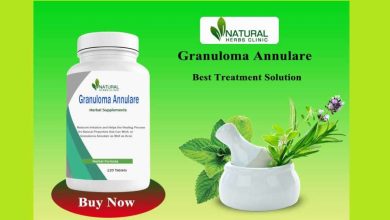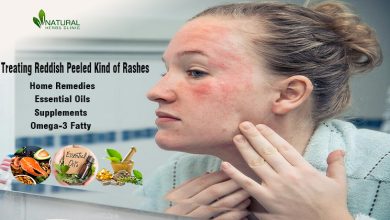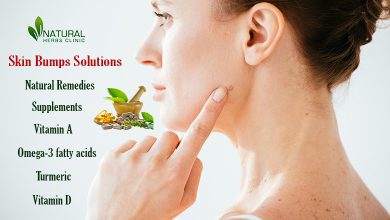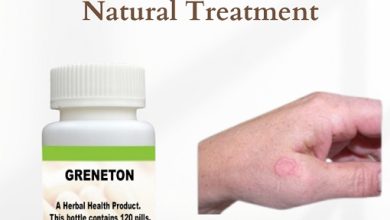Home Remedies for Subcutaneous Granuloma Annulare Treatment Natural
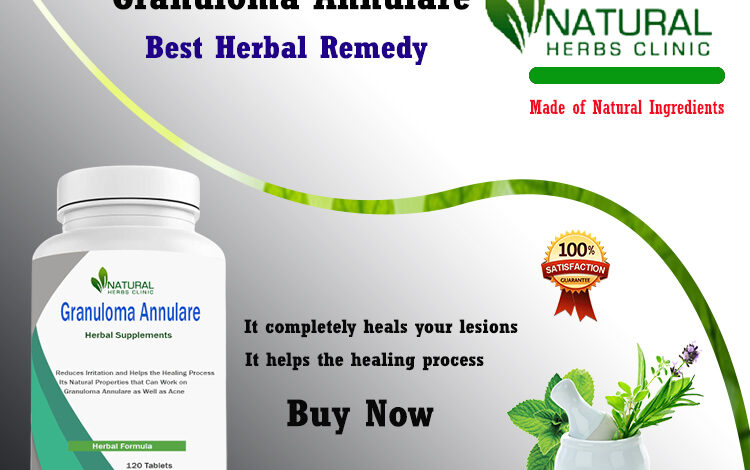
Here are some home remedies and self-care tips for Subcutaneous Granuloma Annulare Treatment Natural that you can consider.
What is Granuloma Annulare?
Granuloma annulare is a relatively common skin condition characterized by the formation of small, raised bumps or lesions that typically appear in a ring or circular shape. The exact cause of granuloma annulare is unknown, and it is not contagious or harmful. It primarily affects children and young adults, but it can occur at any age.
The lesions of granuloma annulare are typically smooth, firm, and skin-colored or slightly reddish. They can range in size from a few millimeters to a few centimeters in diameter. The most commonly affected areas include the hands, feet, elbows, and knees, although it can occur on other parts of the body as well.
Granuloma annulare is thought to be caused by a malfunction of the immune system, leading to the accumulation of immune cells in the skin. However, the exact trigger for this immune response is still unclear. Some studies suggest that it may be associated with certain infections, trauma to the skin, or underlying medical conditions such as diabetes or thyroid disease. However, in many cases, no specific cause can be identified.
In most instances, granuloma annulare resolves on its own without treatment within one to two years. However, some people may choose to seek treatment for cosmetic reasons or if the lesions are causing discomfort or spreading. Treatment options include topical corticosteroid creams or ointments, cryotherapy (freezing), light therapy (phototherapy), or oral medications such as antimalarials or retinoids.
Related Article; Natural Remedies for Granuloma Annulare, Let’s Describes Some
It’s important to consult with a healthcare professional, such as a dermatologist, for an accurate diagnosis and appropriate treatment plan, as other skin conditions can mimic granuloma annulare.
Causes and Symptoms of Granuloma Annulare
The exact cause of granuloma annulare is still unknown. However, there are several theories and potential factors that may contribute to its development. These include:
- Immune system dysfunction: It is believed that granuloma annulare is an immune-mediated disorder, where the immune system mistakenly attacks healthy tissue in the skin, leading to the formation of granulomas. The exact trigger for this immune response is unclear.
- Genetic factors: There may be a genetic predisposition to developing granuloma annulare, as it sometimes occurs in families. However, specific genetic markers or patterns have not been identified.
- Infections: Certain infections, such as viral or bacterial infections, have been associated with the development of granuloma annulare in some cases. However, the role of infections in triggering the condition is not fully understood.
- Other underlying medical conditions: Granuloma annulare has been linked to certain medical conditions, including diabetes mellitus, thyroid disease, autoimmune disorders (such as rheumatoid arthritis), and HIV infection. However, it is important to note that most people with granuloma annulare do not have any underlying medical conditions.
Related Article; Natural Remedies for Granuloma Annulare Treat Itchy Skin
The symptoms of granuloma annulare typically include:
- Skin lesions: The primary symptom of granuloma annulare is the appearance of raised, round or semicircular lesions on the skin. The lesions are usually firm and may be skin-colored, reddish, or brownish. They can range in size from a few millimeters to several centimeters in diameter. The lesions often form a ring or circular pattern, with clear or slightly raised borders.
- Itching or tenderness: In some cases, the lesions may be itchy or tender, causing mild discomfort or irritation.
- Distribution: Granuloma annulare commonly affects the hands, feet, elbows, and knees. However, it can also occur on other parts of the body, such as the wrists, ankles, forearms, and lower legs. It usually appears on one or a few areas, but in some cases, it can be more widespread.
- Self-resolving: Granuloma annulare is typically a self-limiting condition, meaning it tends to resolve on its own without treatment. The lesions may persist for several months to a few years before disappearing.
- It’s important to note that the symptoms and presentation of granuloma annulare can vary among individuals. If you suspect you have granuloma annulare or have concerns about your skin, it is recommended to consult a healthcare professional, such as a dermatologist, for an accurate diagnosis and appropriate management.
Related Article; Natural Remedies for Granuloma Annulare Inflammatory Rash Skin Issues
Subcutaneous Granuloma Annulare Treatment Natural
Subcutaneous granuloma annulare (SGA) is a variant of granuloma annulare that affects the subcutaneous tissue beneath the skin. It typically manifests as painless, firm nodules or lumps. While there is no specific Subcutaneous Granuloma Annulare Treatment, there are some self-care measures that may help manage the symptoms and promote overall skin health. It’s important to note that these suggestions are not proven to universally treat SGA and should not replace medical advice. Here are some natural remedies and self-care tips for Subcutaneous Granuloma Annulare Treatment that you can consider:
- Maintain good hygiene: Keep the affected areas clean and dry to prevent any secondary infections. Gently cleanse the area with a mild soap and warm water, then pat it dry.
- Warm compresses: Applying warm compresses to the affected areas may help alleviate discomfort and promote blood circulation. Soak a clean cloth in warm water, wring out the excess, and gently place it on the nodules for a few minutes. Repeat as needed.
- Stress management: Stress can sometimes worsen skin conditions. Engaging in stress-relieving activities, such as exercise, meditation, yoga, or spending time in nature, may help manage stress levels and potentially improve overall well-being.
- Supportive clothing: Wear loose-fitting, comfortable clothing to minimize friction and irritation on the affected areas. Avoid tight clothing that may exacerbate symptoms.
Read More: Tips for Choosing the Right Sensitive Skincare Routine: Get Glowing Skin without Irritation
If you have concerns about subcutaneous granuloma annulare treatment or its symptoms, it is recommended to consult a healthcare professional, such as a dermatologist, for an accurate diagnosis and appropriate treatment options. They can provide you with the most suitable medical advice and treatment plan for your specific situation.
Helpful Home Remedies for Granuloma Annulare
- Moisturize the skin: Applying moisturizers regularly can help keep the skin hydrated and prevent excessive dryness, which may reduce itching and irritation associated with granuloma annulare. Look for gentle, fragrance-free moisturizers and apply them to the affected areas after bathing or whenever the skin feels dry.
- Topical corticosteroids: Over-the-counter hydrocortisone creams or ointments may help reduce inflammation and itching associated with granuloma annulare. Follow the instructions on the product and consult a pharmacist or dermatologist for advice on appropriate use and duration.
- Aloe vera gel: Aloe vera has soothing and anti-inflammatory properties that may provide relief from itching and irritation. Apply pure aloe vera gel to the affected areas for Granuloma Annulare Natural Treatment a for a few times a day. Ensure you are not allergic to aloe vera by doing a patch test before use.
- Apple cider vinegar: Some people find that applying diluted apple cider vinegar topically may help reduce inflammation and itching. Mix equal parts of apple cider vinegar and water, and gently dab the solution on the affected areas using a cotton ball. Rinse off after a few minutes and moisturize the skin afterward.
- Turmeric paste: Turmeric has anti-inflammatory properties that may help alleviate symptoms. Make a paste by mixing turmeric powder with water or coconut oil. Apply the paste to the affected areas, leave it on for about 20 minutes, and then rinse off with warm water. Be cautious, as turmeric can stain the skin and clothing. It is one of the best Home Remedies for Granuloma Annulare Natural Treatment.
- Dietary considerations: While there is no specific diet for granuloma annulare, maintaining a healthy and balanced diet can support overall skin health. Include a variety of fruits, vegetables, whole grains, and lean proteins in your diet. Some people find that avoiding potential trigger foods, such as processed foods, sugary snacks, and foods high in gluten, may help reduce inflammation in the body.
Read More: Exposition the Hidden Benefits of Natural Beauty Products
It’s important to remember that Granuloma Annulare Home Remedies may not work for everyone, and individual responses can vary. If your symptoms worsen or persist despite home remedies, it is recommended to seek medical advice for further evaluation and treatment.
Get More Sun Exposure: The impact of sun exposure on granuloma annulare is not well-established, and its effectiveness as a Subcutaneous Granuloma Annulare Treatment approach is not supported by strong scientific evidence. While sunlight exposure can have some benefits for certain skin conditions, such as psoriasis, it is not a recommended or proven Subcutaneous Granuloma Annulare Treatment. Additionally, excessive sun exposure without proper protection can lead to skin damage, including sunburn and an increased risk of skin cancer.
Related Article; Home Remedies for Granuloma Annulare Tips to Get Rid of Skin Disease

